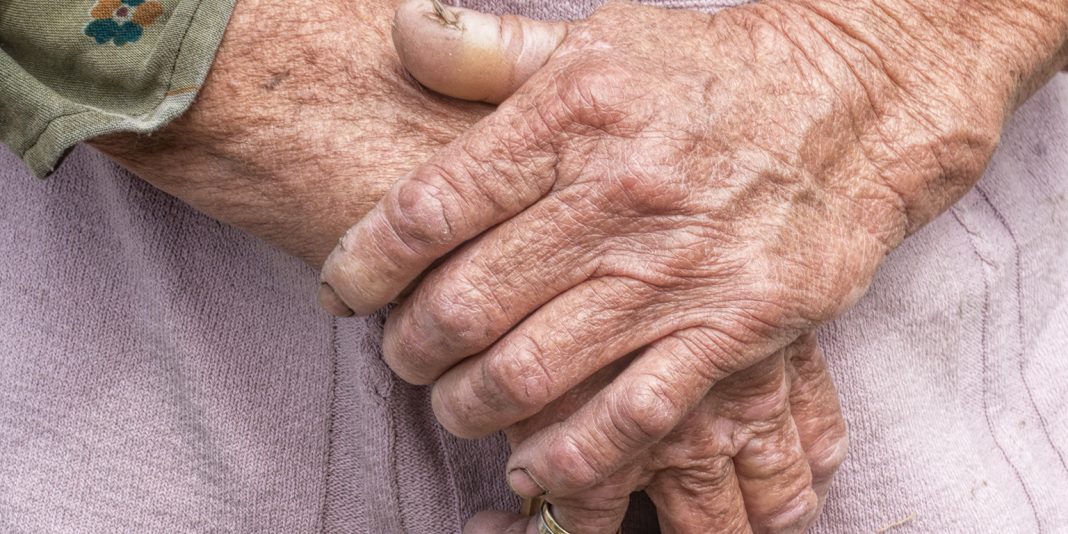Reading this article and completing this Nursing portfolios: a simple guide to competency self-assessment learning activity is equivalent to 60 minutes of professional development.
This learning activity is relevant to the Nursing Council registered nurse competencies 1.1, 1.4, 2.1-2.4, 2.6, 2.8-2.9.
Learning outcomes
Reading and reflecting on this article will enable you to:
- further your understanding of how the quality of clinical service delivery is measured in your workplace
- review your understanding of skin tear injuries and their significance for the individual concerned.
Introduction
Henry had been living in an aged residential care facility for several years. He was now frail and confused, requiring assistance with almost all aspects of daily living. Paul, Henry’s son, visited him at least twice weekly, and on a recent visit noticed that his lower arm was bandaged. Staff were unable to tell Paul what had happened to Henry’s arm, and there was no wound assessment or treatment plan. According to the wound register, Henry had two other skin tears on his legs, but the status of these wounds was unclear.
When the registered nurse removed Henry’s arm bandage, two large and inflamed skin tears (each with a partial flap loss) were found. Skin closure strips had been used on both injuries and then covered with dry dressings, which had adhered to the wounds. Henry moaned loudly and kept trying to move his arm away when the areas were being redressed1.
Although skin tears represent more than half of all skin injuries in older adults, they have been described as forgotten wounds2, receiving little attention or research.
Skin injuries such as skin tears are often regarded as inevitable, and remain underappreciated, under-reported and essentially invisible3. Yet nurses working with older adults in all clinical settings are likely to encounter skin tears on a very regular basis.
The factors that contribute to the quality of nursing service delivery for older adults are complex, and singling out just one measure alone cannot offer a valid representation of the quality of service delivery. However exploring events and injuries such as skin tears in more depth enables clinical staff and management to identify opportunities for improving service delivery and reducing potential/actual distress and injury for older adults.
Skin tears revisited
Skin tears are “wounds caused by shear, friction, and/or blunt force, resulting in separation of skin layers. A skin tear can be partial thickness (separation of the epidermis from the dermis) or full thickness (separation of both epidermis and dermis from underlying structures)”4. (Refer to the STAR Skin Tear Classification System [see Box 1 Next page]5 and the learning activities associated with this article for further information on skin tear classifications and management). Although there are a number of commonly recognised classification tools for assessing and documenting skin tears, international research suggests these are not used regularly6.
Internationally, information on the skin tear prevalence and incidence rates are limited2. It has been suggested that under-reporting occurs because of a primary focus on pressure injuries, and that iatrogenic skin injuries, such as skin tears, and incontinence-associated dermatitis, are regarded as an inevitable part of ageing3. The New Zealand prevalence rate (number of new and current skin tears) is unknown7.
ACC accepts claims for primary injuries that include skin damage, injury or tears related to treatment by a registered health practitioner, but it cannot provide data specific to skins tears. Between 2011 and 2016 the number of accepted treatment-related claims for skin damage, injury or tears varied between 161 and 239 per year, with an average of 181 claims per year.
Since data was collected in 2005, 79 per cent of accepted claims for this primary treatment injury relate to individuals aged over 65 years of age. Nursing is the lead ‘context’ of these injuries and the top three treatment events that resulted in the injury are firstly removal of dressings/wound care; secondly patient transfer, and lastly removal of strapping8.
Australian researchers identified an incidence rate of 10.6 per 1,000 occupied bed days in their control group of residents in aged care facilities, while another study identified a 20 per cent prevalence rate in adults aged over 80 years living in the community9.
The skin of older adults is particularly vulnerable to injury, and iatrogenic skin injuries result from complex, multifactorial and interconnected threats3. Tissue tolerance is affected by:
- advancing age
- pre-existing health status and comorbidities
- level of nutrition
- medications
- perfusion
- oxygenation
- mobility
- sensory perception3.
Environmental factors, such as staff turnover, skill mix, and knowledge and care practices all have the potential to exacerbate skin tear rates.
Skin tear outcomes
Skin tears range from relatively minor to extensive and complex wounds, although they may be perceived by some as minor injuries10. Like any wound, they are a potential site of infection, especially in the frail elderly, as well as impacting on the person’s quality of life. Skin tears can be painful, as the superficial nerve endings are usually affected10 and have the potential to become chronic wounds.
The management of skin tear injuries further adds to staff workloads and care delivery costs. When older adults experience skin tears on a regular basis, keeping track of multiple injuries and their healing status can prove challenging. This is especially so when these wounds may not require daily changes of dressing if appropriate dressings are used, meaning there is an increased potential for them to be overlooked.
The experience of a skin injury, such as a skin tear, is unique and specific to each individual injury, and can impact on all aspects of the person’s wellbeing3. Ongoing skin tears can be a very visible and unwelcome reminder for both individuals and their families of physical deterioration. When a person experiences multiple skin tears over time, they also have the potential to cause family members to question the quality of service delivery.
BOX 1
STAR Skin Tear Classification System Guidelines
- Control bleeding and clean the wound according to protocol.
- Realign (if possible) any skin or flap.
- Assess degree of tissue loss and skin or flap colour using the STAR Classification System.
- Assess the surrounding skin condition for fragility, swelling, discolouration or bruising.
- Assess the person, their wound and their healing environment as per protocol.
- If skin or flap colour is pale, dusky or darkened reassess in 24-48 hours or at the first dressing change.
STAR Classification System
1. Category 1a
A skin tear where the edges can be realigned to the normal anatomical position (without undue stretching) and the skin or flap colour is not pale, dusky or darkened.
2. Category 1b
A skin tear where the edges can be realigned to the normal anatomical position (without undue stretching) and the skin or flap colour is pale, dusky or darkened.
3. Category 2a
A skin tear where the edges cannot be realigned to the normal anatomical position and the skin or flap colour is not pale, dusky or darkened.
4. Category 2a
A skin tear where the edges cannot be realigned to the normal anatomical position and the skin or flap colour is pale, dusky or darkened.
 5. Category 3
5. Category 3
A skin tear where the skin flap is completely absent.
From: STAR Skin Tear Classification Tool developed by Skin Tear Audit Research (STAR). Silver Chain Group Limited, Curtin University. Revised 4 February 2010. Reprinted August 2012. You can download full STAR tool and glossary at: www.woundsaustralia.com.au/wa/resources.php
Is our service up to standard?
Measuring the quality of care is a complex and multifaceted undertaking.
All healthcare services in New Zealand are regularly assessed against the Health and Disability Sector Standards (2008)11. Compliance with these standards includes having a plan for measuring the quality of services, which may involve monitoring quality indicators (see Box 2), complaints, service user satisfaction surveys, and responses to identified issues.
New Zealand’s Health Quality and Safety Commission12 has developed a set of quality markers that track progress over time in the health and disability sector relating to four key priority areas – falls, healthcare associated infections, surgical harm and medication safety.
A Standards New Zealand Working Party developed specific clinical indicators for individuals requiring aged care or dementia care in 2005 (see Box 2)13. Indicators include pressure injuries, falls, urinary tract infections and staffing hours but not skin tear rates. However, skin tear rates should be included as a clinical indicator for any organisation providing services to older adults because of the frequency of these injuries, their impacts on individuals, and the many opportunities for preventing/minimising their occurrences.
Monitoring skin tear injury rates provides a valuable overview of service delivery, while auditing individual cases (tracer methodology) offers a window into systems and processes. The Ministry of Health14 suggests that examining the journey of a specific client/resident/patient facilitates understanding of the care that is being provided and shows if staff know how to deliver care, tests systems and processes and their function and validates the individual’s journey and outcomes (p.4).
A detailed review of just one service user’s experience with a skin tear injury can provide a range of valuable information, including:
- wound management practices and consistency with service policies – systems and processes for assessing/classifying/evaluating and reporting on wound progress; evidence-based wound management practices (e.g. not using skin closures on skin tears15); use of appropriate wound care products; monitoring for infection; checking that wounds are regularly monitored until they heal
- assessment and care planning – short-term plans related to the skin injury and its associated clinical requirements, such as analgesia, enhanced nutrition; strategies to minimise risk of skin injuries or further injuries, such as avoiding soaps and using skin moisturisers twice daily9, and the use of appropriate transfer equipment, for example, slider sheets
- capturing relevant data – initial and ongoing documentation in the clinical record related to the injury; completion of an accident/incident report; open disclosure to the individual and/or family; analysis of incident and accident data; mechanisms for responding to findings, reporting results to staff, actioning any identified deficits.
In conjunction with reviewing individual cases, an analysis of skin tear injury rates across the service can tell us about environmental factors that may contribute to these injuries, such as the times of day the injuries occur; the skin tear site; staff skill mix and ratios; staff education and knowledge deficits. These are modifiable factors the organisation can work towards addressing.
BOX 2: Indicators for safe aged care
An indicator is a measure or flag against which some aspect of a standard can be assessed. Indicators generally simplify and quantify complex phenomena and aid the communication of information about those phenomena. Indicators are information tools. They summarise data on complex issues to indicate the overall status and trends on those issues. Indicators are generally measures that link the processes of care with desirable outcomes13 (p.13-14).
Conclusion
Unfortunately, skin tears are a common occurrence for many older adults, resulting in pain, distress, and the potential for chronic wounds. Skin tear injuries result from many interlinked factors relating to the individual, the environment, and care practices. Some of these factors are modifiable, such as patient handling procedures, and others, such as significant frailty, are not.
While it is important that skin tears are prevented when possible, and when they occur are carefully and appropriately managed using best practice, these injuries also offer a picture into the quality of care received by individuals and a patient cohort. Rather than being a forgotten and inevitable wound for older adults, skin tears should be a key reminder of the complexity of care for this growing population.
View the PDF of this learning activity here >>
About the authors:
- Lesley Batten RN PhD is a senior researcher at Massey University, Palmerston North.
- Marian Bland RN PhD is a healthcare auditor.
This article has been peer reviewed by:
- Julie Betts RN MN, who is a wound care nurse practitioner at Waikato District Health Board.
- Rebecca Aburn RN MN, who is an infection prevention and control nurse specialist at Southern District Health Board with a special interest in wound care.
Recommended resources
- The International Skin Tears Advisory Panel website includes a range of resources, including the Skin Tear Resource Kit, a skin tear decision algorithm, and consensus statements relating to the prevention, prediction, assessment and treatment of skin tears. www.skintears.org
- The New Zealand Health and Safety Commission website includes comprehensive information on evaluating health quality.
www.hqsc.govt.nz/our-programmes/health-quality-evaluation - Pharmac’s 2015 Seminar Series focusing specifically on wounds is available via You Tube. The first part of the fourth video in this series, titled From skin tears to leg ulcers, covers a range of information relevant to skin tear prevention and management.
www.youtube.com/watch?v=JKme8c9KyB4 - The Skin Safety Model proposed by Campbell, Coyer and Osborne offers a new perspective on older adults’ vulnerability to skin injuries and outlines a framework for skin care and the promotion of skin integrity. CAMPBELL J, COYER F & OSBORNE S (2016). The skin safety model: reconceptualising skin vulnerability in older patients. Journal of Nursing Scholarship 48(1) 14-22.
http://onlinelibrary.wiley.com/doi/10.1111/jnu.12176/full - Detailed information on the selection of wound products for skin tears can be found in the following article: LEBLANC K, BARANOSKI S & LANGEMO, D et al (2015) The art of dressing selection: a consensus statement on skin tears and best practice. Advances in Skin and Wound Care 29(1) 32-46.
- Information relating to the prevention of skin tears is outlined by: SUSSMAN G & GOLDING M (2011). Skin tears: should the emphasis be only their management?
Wound Practice and Research 19(2), 66-70.
References
- Personal anecdote as told to Marian Bland.
- LEBLANC K & BARANOSKI S (2014) Skin tears: the forgotten wound. Nursing Management 45(12) 36-46.
- CAMPBELL J, COYER F & OSBORNE S (2016) The skin safety model: reconceptualising skin vulnerability in older patients. Journal of Nursing Scholarship 48(1) 14-22. http://onlinelibrary.wiley.com/doi/10.1111/jnu.12176/full
- INTERNATIONAL SKIN TEARS ADVISORY PANEL (2015). www.skintears.org
- SILVER CHAIN GROUP & CURTIN UNIVERSITY (2007) STAR skin tear classification system. Retrieved from www.woundsaustralia.com.au/publications/2010_wa_star-skin-tear-tool-g-04022010.pdf
- HOLLISTER AND INTERNATIONAL SKIN TEARS ADVISORY PANEL (2013). Skin tear resource kit. www.skintears.org/pdf/Skin-Tear-Resource-Kit.pdf
- MILNER E (2013). Simple tear but complex wound. Nursing Review 13, 18-19. www.hqsc.govt.nz/assets/Falls/10-Topics/Milner-Nursing-Review-Nov-2013-Skin-tears.pdf
- ACC TREATMENT INJURY DATA FROM 1 JULY 2005. [Skin treatment injury data emailed by ACC to Nursing Review on 21 April 2017 following request for information.]
- CARVILLE K, LESLIE G, OSSEIRAN-MOISSON R, NEWALL N & LEWIN G (2014). The effectiveness of a twice-daily skin-moisturising regimen for reducing the incidence of skin tears. International Wound Journal 11, 445-53.
- STEPHEN-HAYNES J & CARVILLE K (2011). Skin tear made easy. Wounds International 2(4). Retrieved from www.woundsinternational.com/media/issues/515/files/content_10142.pdf
- MINISTRY OF HEALTH (2016a). Service standards. www.health.govt.nz/our-work/regulation-health-and-disability-system/certification-health-care-services/services-standards.
- HEALTH QUALITY AND SAFETY COMMISSION NEW ZEALAND (2016). Health Quality and Safety Indicators. www.hqsc.govt.nz/our-programmes/health-quality-evaluation/projects/health-quality-and-safety-indicators
- STANDARDS NEW ZEALAND AND MINISTRY OF HEALTH (2005) New Zealand Handbook – indicators for safe aged-care and dementia-care for consumers. SNZ HB 8163:2005.
- Ministry of Health (2014). Tracer methodology revisited. HealthCert Bulletin: Information for Designated Auditing Agencies 11, 4. www.health.govt.nz/system/files/documents/pages/healthcert-bulletin-11-april-2014.pdf
- LEBLANC K, BARANOSKI S & LANGEMO, D et al. (2015). The art of dressing selection: a consensus statement on skin tears and best practice. Advances in Skin and Wound Care 29(1) 32-46.
- NURSING COUNCIL OF NEW ZEALAND (2012) Competencies for registered nurses. Retrieved January 2016 from www.nursingcouncil.org.nz/Publications/Standards-and-guidelines-for-nurses
























Can you help me to the learning activity of Skin Tears so I can complete it for Professional Development
Thank you
Kind regards
Ada
Hi Ada. Thanks for getting in touch and apologies to yourself and other readers for our oversight! We had some ‘teething problems’ with launching the new website… We will attach a pdf including the learning activity today (July 25).